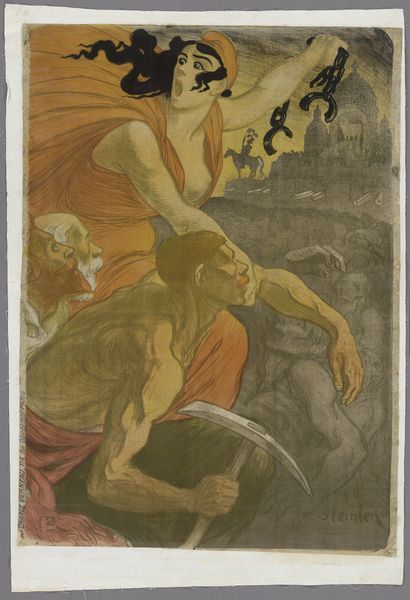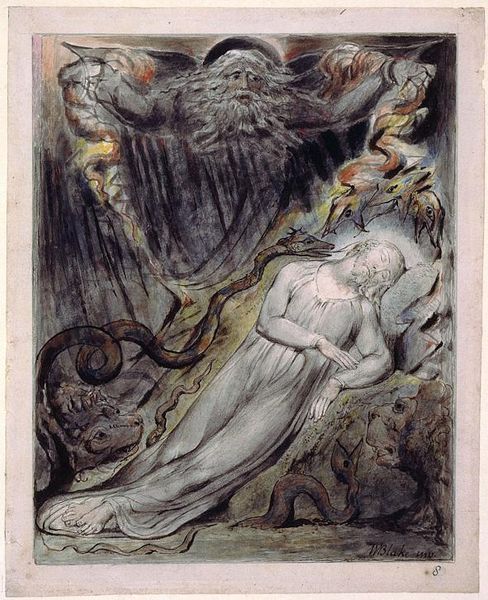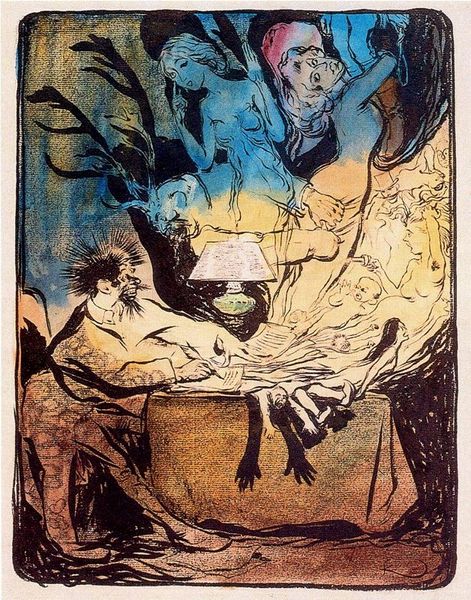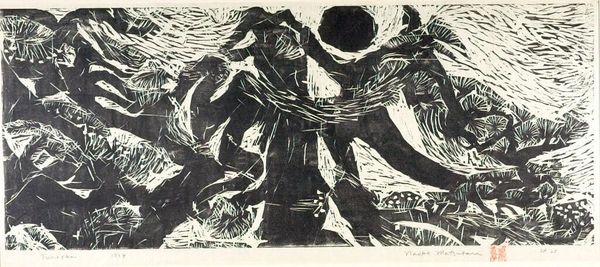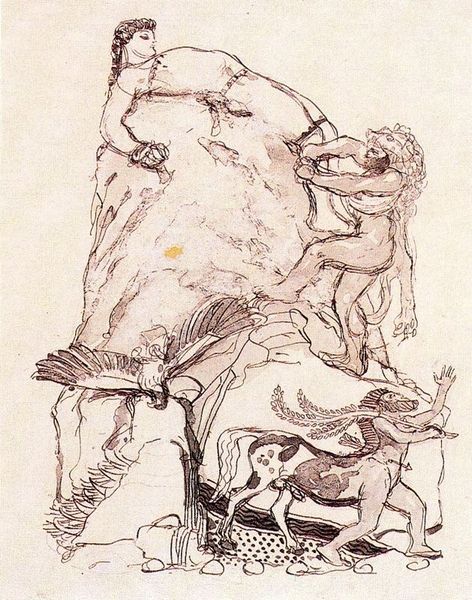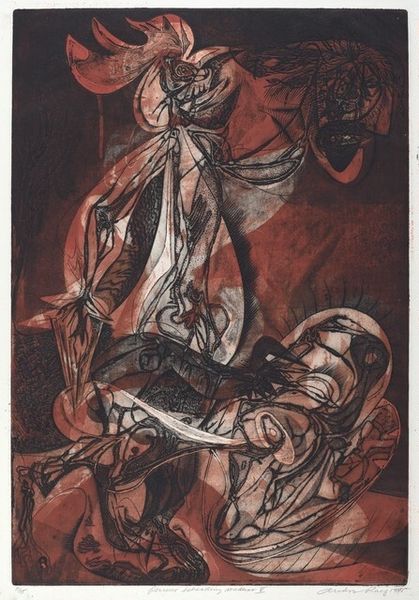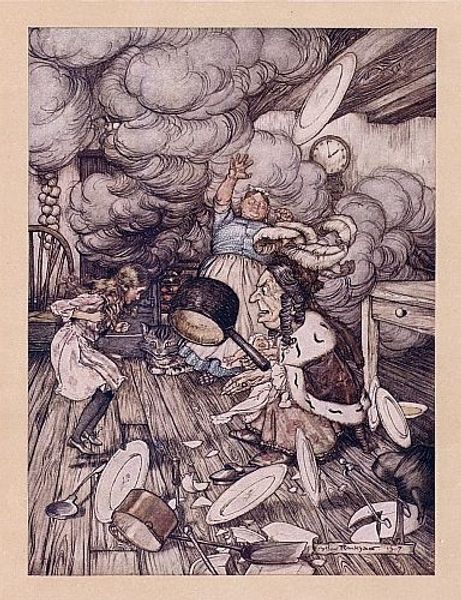
#
abstract painting
#
possibly oil pastel
#
handmade artwork painting
#
oil painting
#
fluid art
#
acrylic on canvas
#
underpainting
#
naive art
#
watercolour illustration
#
watercolor
Copyright: Public domain
Curator: Théophile Alexandre Steinlen's "Laliberatrice," created around 1901, just pulls you right in, doesn't it? A flurry of colour and raw emotion. Editor: Absolutely, there's something viscerally immediate about the rawness, the urgent sense of liberation implied. I see the symbolic breaking of chains as a potent representation of release from oppression. Curator: He's got this swirling, almost chaotic composition, yet within it, figures emerge from the shadows as if clawing their way out. Look at the woman at the top, her face is alive, caught between triumph and maybe something akin to horror at the cost of it all. The orange cape really emphasises her as the beacon of change. Editor: And consider how chains themselves represent confinement – not just physical, but mental and emotional. Steinlen, as a poster artist, likely wanted immediate emotional comprehension of freedom as breaking free from shackles. We see her holding the broken chain pieces – it is the action, not the end result, that she represents. It's a potent cultural message in a simple form. Curator: Her slightly disturbing look contrasts with the downcast eyes of the worker on the ground - like a sort of dark Madonna ushering in change. And it is dark: you’d imagine liberty to be illuminated, bright and triumphant. This woman looms instead. There's such weight, you almost feel their exhaustion just by looking at them, I can't help but see my own country through its prism. Editor: Notice, also, the pickaxe in the labourer's hands. Traditionally it suggests physical labour, of course. But I’d also look at it as the possibility of digging towards the truth, and thus, leading to the possibility of liberty through discovery of deeper values. It acts both literally and symbolically. Curator: That gives me an image of revolution being like an archeological dig - both in the search for truth and as a demolition of old ways. Well, I walked into this expecting a statement on social justice and came away seeing even a more personal story too, fascinating! Editor: Quite! The way Steinlen employed symbolism ensures its lasting power, regardless of passing political winds. It echoes with emotional truths that simply continue to resonate across time.
Comments
No comments
Be the first to comment and join the conversation on the ultimate creative platform.

